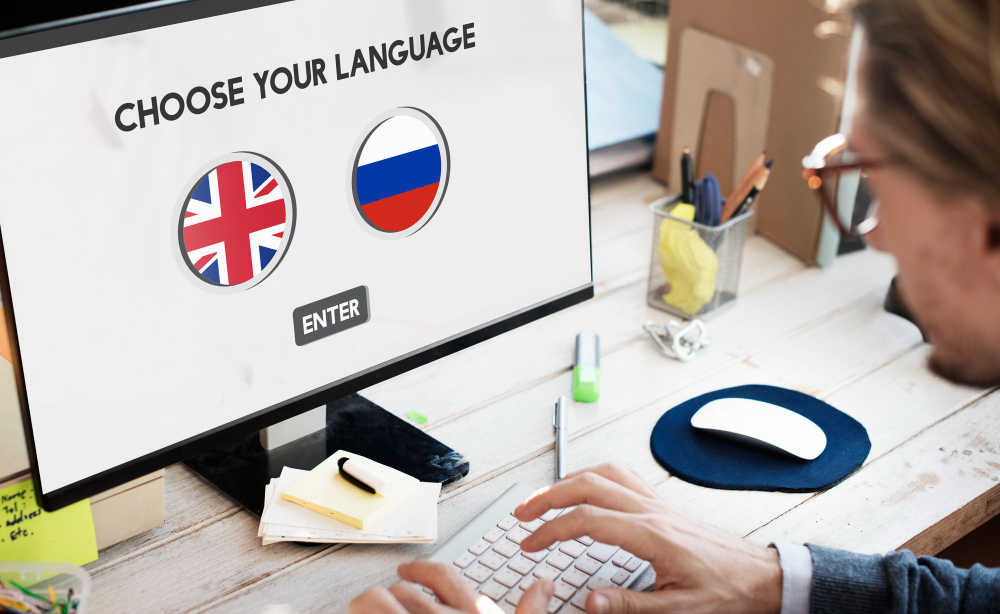Why Human Translation Still Beats AI for English to Spanish Projects
Aug 12, 2025, Nishi SinghPicture this: A company is launching a new marketing campaign targeting Spanish-speaking audiences. They need precise, culturally relevant translations to connect with their audience effectively. To save time and costs, they opt for artificial intelligence (AI) translation tools. The result? Grammatically correct but tone-deaf content that feels robotic and, at times, completely off the mark. Their message is lost—or worse, misunderstood.
This scenario isn’t uncommon. Sure, AI has come a long way, dazzling us with its speed and convenience. But when it comes to complex tasks like English to Spanish human translation, factor in nuances, idioms, and cultural sensitivity, and one thing becomes clear—human translators still have the edge. Here’s a deep dive into human translation versus AI translation, examining why human expertise continues to outperform artificial intelligence in Spanish translation projects.
1. Beyond Words: The Power of Cultural Accuracy
One of the biggest hurdles artificial intelligence faces is understanding context. Translation isn’t just about swapping words from one language to another—it’s about capturing their essence.
Take for example the Spanish phrase se me hace agua la boca, which literally translates to “my mouth is watering.” While accurate, it doesn’t quite hit the essence if we’re discussing anticipation for something exciting—like a new opportunity. A skilled human translator knows when to adapt phrases like this to suit context or cultural tone, whereas AI usually sticks to verbatim translation.
Cultural Sensitivity Matters
Human translators excel in understanding the cultural and regional nuances that vary even among Spanish speakers. For example, the word pluma means "pen" in Mexico but "feather" in Spain. A human translator instinctively adjusts based on the specific target audience. Simply put, Spanish translation accuracy heavily depends on context—something AI simply can’t match on its own.
2. Nuance and Emotion in Language
Languages are rich ecosystems of tone, idioms, and emotion. How can a machine recognize the underlying sentiment in phrases like "It’s raining cats and dogs" or the emotional weight in "We’re heartbroken by the devastation"? AI translation tools often falter here, delivering mechanical translations devoid of personality. This leads to text that feels detached or cold—not ideal for industries that rely on connection, like marketing, media, or customer service.
Human Understanding Wins
Humans inherently understand the emotional weight behind words. Translators bring emotions to life, ensuring a conversational tone where needed or a formal tone in professional settings. For projects that demand emotion-infused results, like product advertising or customer engagement, choosing human over AI is a no-brainer.
3. Grammar and Syntax Variations
If you’ve reviewed translations from any machine tool, you’ve probably noticed odd sentence structures. This happens because English and Spanish follow different grammatical rules. AI often translates word-for-word, ignoring stylistic or syntactical differences.
For instance, consider the classic example of adjective placement. In English, we write “the big house.” A literal AI-generated translation might give “la grande casa,” when the correct Spanish is “la casa grande.” While modern AI tools are improving, they remain prone to awkward constructions that disrupt fluency.
Human vs Machine Translation in Practice
A human translator understands these nuances instinctively, ensuring proper syntax while maintaining the tone and tempo of the original content.
4. Handling Industry-Specific Content
When working on technical content—be it legal documents, medical reports, or highly specialized manuals—translation gets trickier. AI excels in speed, but it relies entirely on preprogrammed algorithms and databases. This becomes an issue when industry-specific terms vary by region or profession.
Consider medical terminology. Spanish in Mexico may use one set of terms while Spanish in Argentina may lean on distinctly different phrasing. English to Spanish human translation specialists research and tailor translations to the exact target audience, ensuring the message fits seamlessly into the context of its industry.
5. AI Translation Limitations in Real Time
AI thrives in scenarios where speed trumps quality. Need a quick gist of something for internal use? AI tools can deliver. But if a project requires precision and polish—think legal files, movie subtitles, or book translations—AI struggles with ambiguity, wordplay, or metaphors.
Take the example of described video translations. Translating film subtitles doesn’t stop at getting the words across; they need to sync seamlessly with the audio and visuals for maximum impact. Human translators excel in making judgment calls that AI can’t process.
6. Why Human Translators Are Better for English to Spanish Projects
Cultural Expertise: Human translators adapt text to fit diverse Spanish dialects and cultural norms.
Tone Preservation: They capture humor, sarcasm, or professional gravitas—qualities that AI often misses.
Flexibility: Humans interpret complex ideas and adjust dynamically when context demands shifts.
Error Mitigation: AI is prone to misinterpreting polysemous words (those with multiple meanings). Skilled humans double-check for clarity.
7. The Role of Humans in AI-Assisted Translation
Interestingly, one of AI’s growing opportunities lies in collaborating with human translators. Tools like machine-assisted translation can generate a rough draft quickly, leaving the finer, nuanced editing to language professionals. This human-AI hybrid model speeds up workflows while maintaining the integrity of cultural and stylistic translation elements.
Final Thoughts
AI has undeniably revolutionized the translation industry, offering tools that perform tasks at lightning speed. However, when accuracy, context, and emotion are at stake, humans still hold the upper hand. Human vs machine translation is not about replacing one with the other but strategically leveraging both to their strengths.
For projects requiring precision, authenticity, and a human touch, English to Spanish human translation will always outperform automated tools. As industries like legal, healthcare, and even entertainment look to connect across languages, the role of human translators remains irreplaceable.
When your projects demand excellence, trust myTranscriptionPlace, a proven leader in Translation Services. Combining human expertise with cutting-edge tools, we ensure your message transcends languages with clarity, emotion, and impact.
Looking for tailored solutions for your English to Spanish projects? Get in touch today and experience the human difference.
FAQs
1. Why is human translation more accurate than AI for English to Spanish?
Human translation considers context, cultural nuances, and intent, ensuring higher accuracy. AI often struggles with idiomatic expressions and regional variations, leading to errors or unnatural phrasing.
2. What common mistakes do AI translators make with English to Spanish translation?
AI translators frequently misinterpret idioms, misplace adjectives, and fail to adapt phrases for cultural or regional appropriateness. Literal word-for-word translations often result in awkward or incorrect expressions.
3. Can AI capture cultural and regional variations in Spanish?
AI lacks the ability to fully account for cultural and regional differences in Spanish, such as the varied vocabulary, idioms, and phrases used across countries like Mexico, Spain, and Argentina.
4. How does human translation handle tone and intent better than AI?
Human translators read between the lines, capturing subtleties like humor, sarcasm, or formal tones. They adapt phrasing based on the communication’s purpose, offering emotional and contextual precision.
5. What industries benefit most from human over AI translation?
Industries like legal, medical, marketing, and creative fields benefit the most, as they demand accuracy, cultural sensitivity, and emotional resonance—qualities where human translators excel over AI.






